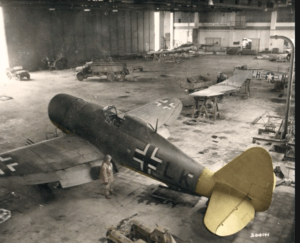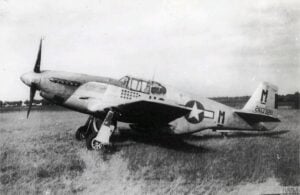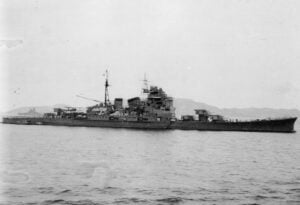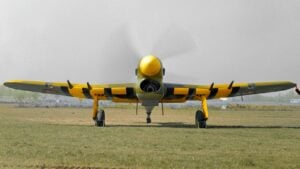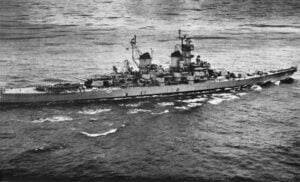The Story of the WWII German Bomber That Nearly Reached New York
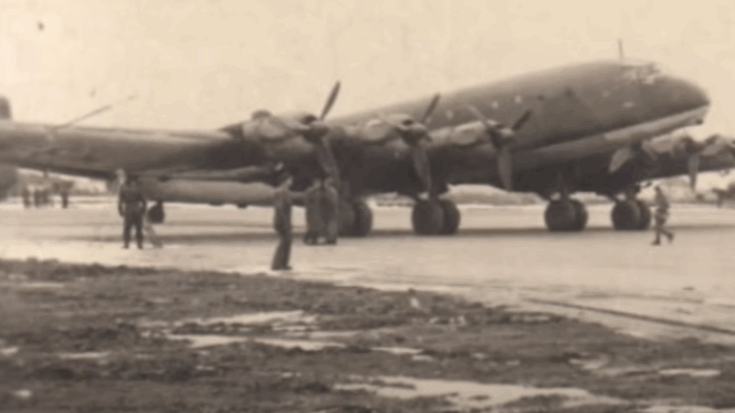
Behind The Clouds / YouTube
A Bold Idea in Wartime
In 1942, while Europe lay deep in conflict, German planners imagined a way to strike the United States directly. Their hope was that if bombs could fall on American soil, it might unsettle the public and force the U.S. to divert attention away from Europe. The idea was not only military but psychological, aimed at creating fear. At the center of this plan was a new long-range aircraft known as the Junkers Ju 390.
The Ju 390 was designed to fly across the Atlantic Ocean without stopping. It was a scaled-up version of the Ju 290, a proven transport and reconnaissance aircraft. Rather than starting from scratch, engineers extended and reinforced what already existed, creating a massive machine with the potential to reach New York City and return to Europe in a single flight.
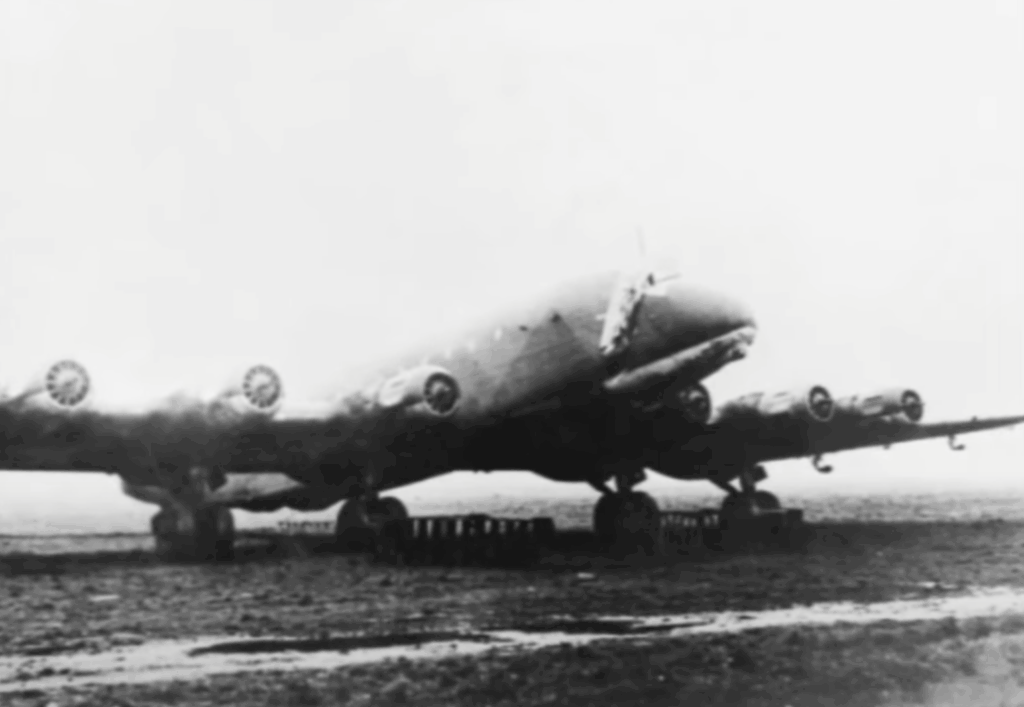
Building the Aircraft
The Ju 390 was enormous for its time. Its wings stretched more than 50 meters, wider than two buses parked end to end. Six BMW 801E radial engines provided more than 10,000 horsepower in total, the same type used in the Focke-Wulf 190 fighter but combined here on a far larger scale. The aircraft could, in theory, travel nearly 10,000 kilometers, though more realistic estimates placed the figure closer to 8,000 depending on weight and weather.
Its defensive armament was strong for such a large bomber. It carried cannons in turrets above and behind, as well as machine guns placed along the fuselage and nose. Engineers even proposed adding heavier quad-barreled turrets. Under its wings, the Ju 390 was also designed to carry guided bombs or anti-ship missiles, an ambitious concept for the 1940s.
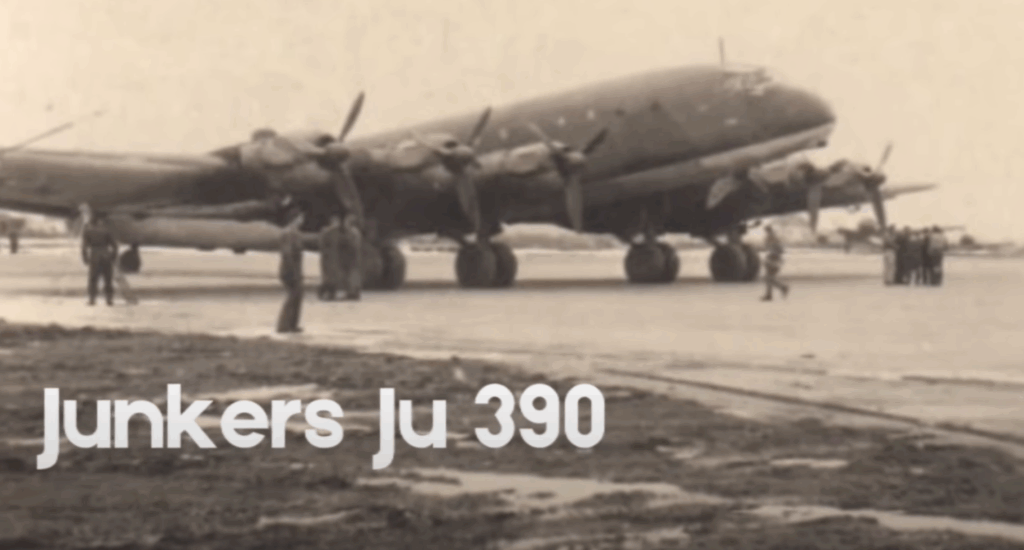
Prototypes and Testing
Two prototypes were built, known as V1 and V2, though the second remains debated by historians. The first, V1, flew for the first time in October 1943. Test flights took place in Germany and later in Prague, where the aircraft even experimented with aerial refueling, a technique that would become common decades later. These tests proved that the aircraft could fly, though takeoffs were dangerous, requiring long runways and perfect engine performance.
The fate of V1 is clear. As Allied forces closed in during 1945, it was destroyed to prevent capture. The story of V2 is less certain. Some records suggest it was built and flew, while others argue it never left the ground. Even pilots who worked with the aircraft disagreed. This uncertainty has fueled speculation ever since.
Planned Variants and Ambitions
Beyond the prototypes, German planners envisioned several versions of the Ju 390. One was a heavy transport designed to carry cargo, troops, or even vehicles over great distances. Another was meant for maritime patrol, equipped with radar to track convoys across the Atlantic. The most dangerous concept was the Ju 390C, a true long-range bomber that could, at least in theory, deliver a strike on American cities. Japan even expressed interest in acquiring the design, though the war’s end halted any transfer.
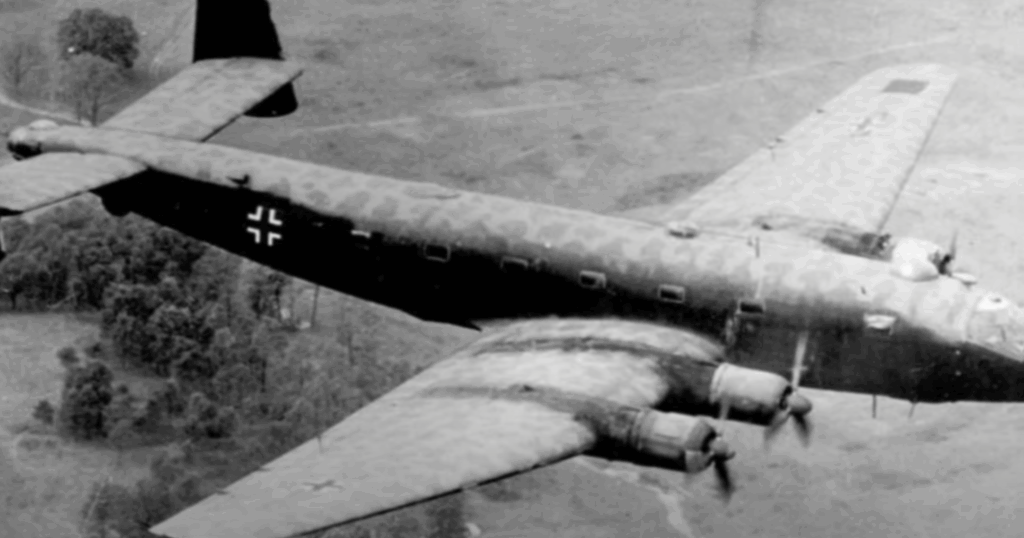
The Myth of New York
One of the most enduring stories claims that a Ju 390 flew within sight of New York City in January 1944. According to this tale, the bomber took off from a base in France, reached the American coast, snapped photos, and returned without being detected. The claim first appeared in 1955 through a British aviation writer, who said it was based on intelligence reports.
However, no photographs, radar logs, or official documents have ever supported the claim. Pilot records show that the first prototype was in Prague at the time, not France. Even if it had been available, conditions made such a mission extremely unlikely. Many historians now believe the story may have been spread as psychological warfare, meant to make Americans feel vulnerable.

The End of the Project
By the summer of 1944, the German long-range bomber program was shut down. The war had shifted. Fuel shortages, the loss of air superiority, and the growing pressure of Allied bombing forced German industry to concentrate on defensive fighters rather than ambitious projects. The Ju 390 never reached New York, but its story remains a striking example of how wartime ambition and myth can intertwine, leaving behind both historical fact and enduring legend.













